
Slopes can be tricky, but they’re also amazing! Plants help stop dirt from sliding away and make water flow better. You can grow pretty flowers, strong grass, or tiny trees to keep the hill safe and pretty.
Think of butterflies dancing around blooms or a tiny pond that makes the air feel calm.
Tired of muddy yards? Slopes need special plants that hold soil tight. Choose low-growing shrubs, hardy flowers, or grasses that grow fast.
它们 help the land stay strong and look nice. Ready to turn your slope into a green wonder? Let’s plant, grow, and enjoy!
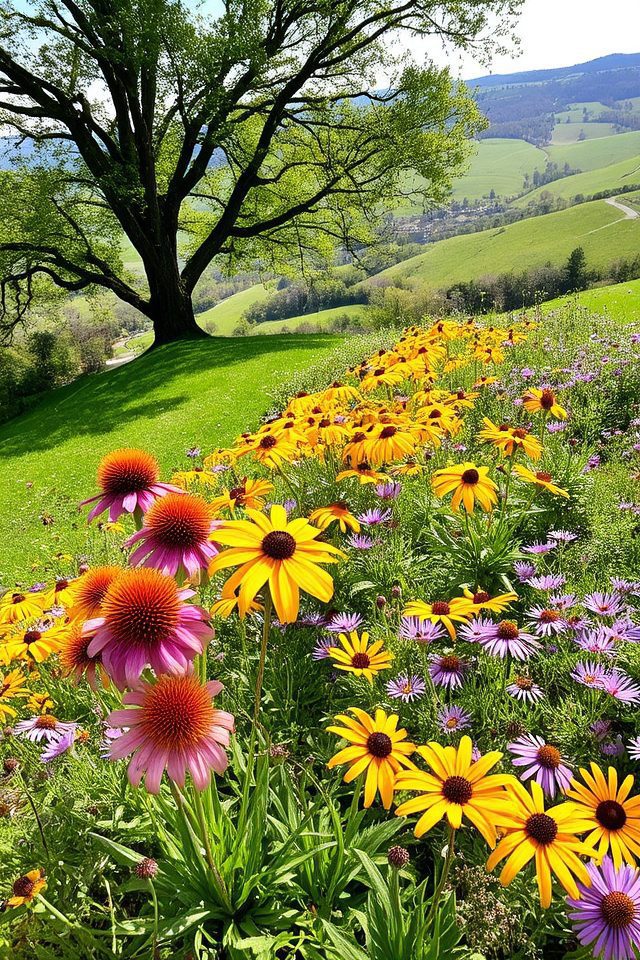
Native wildflowers are an excellent choice for planting on slopes, as they thrive in local conditions and require minimal maintenance. Their deep roots help prevent erosion, while their vibrant colors attract pollinators, enhancing the ecosystem. Since they are adapted to the soil and climate of the region, these wildflowers create a natural look that blends seamlessly with the surrounding environment, providing beauty and ecological benefits over time. Consider species like coneflowers, black-eyed Susans, and asters for an eye-catching display.
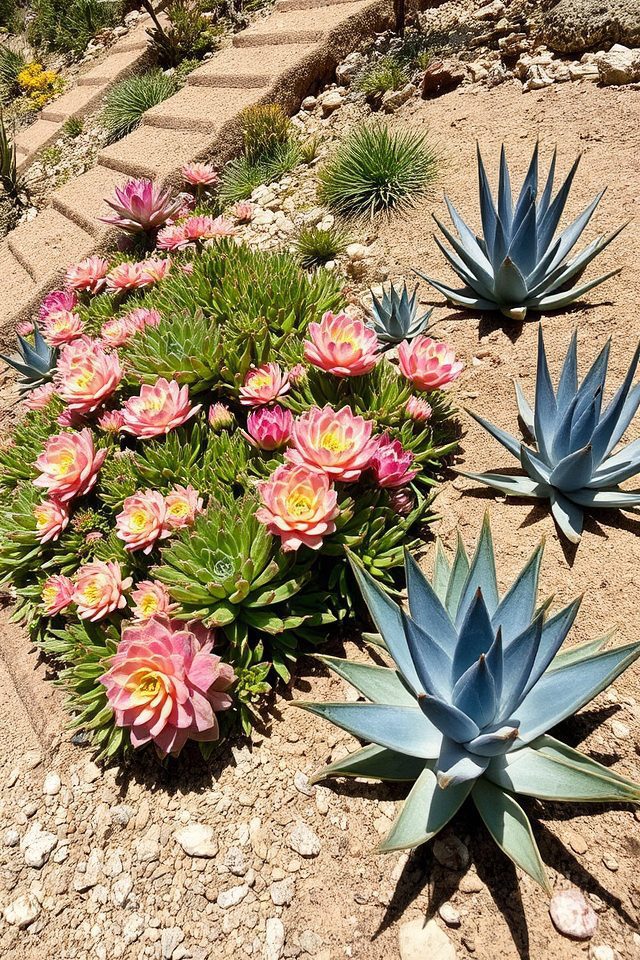
Drought-resistant succulents are ideal for sloping landscapes, as they thrive in well-draining soil and require minimal water. These hardy plants, such as Sedum, Agave, and Echeveria, store moisture in their leaves, making them perfect for arid conditions. Their diverse shapes and vibrant colors add visual interest while stabilizing the soil, reducing erosion and promoting a sustainable garden. Incorporating these resilient beauties guarantees a low-maintenance, eco-friendly solution for any inclined area.
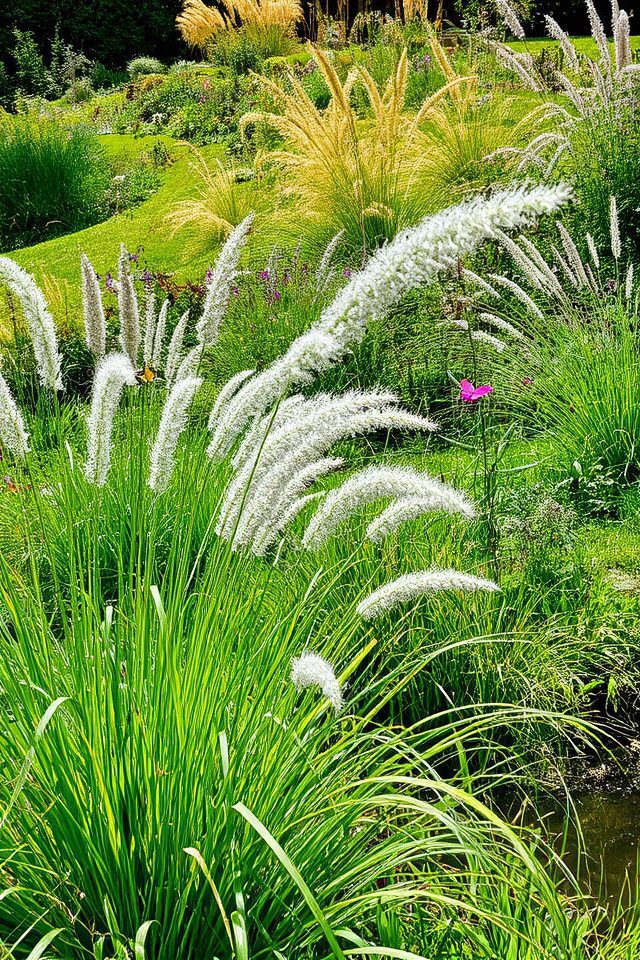
Ornamental grasses are an excellent choice for adding texture and movement to sloped landscapes. Their graceful forms and varied heights create visual interest year-round, while their deep-root systems help prevent soil erosion. Varieties such as Miscanthus, Panicum, and Festuca thrive in diverse conditions and can complement other plants beautifully. Not only do they provide a softening effect on hardscapes, but they also attract birds and pollinators, enhancing the ecological balance of your garden.
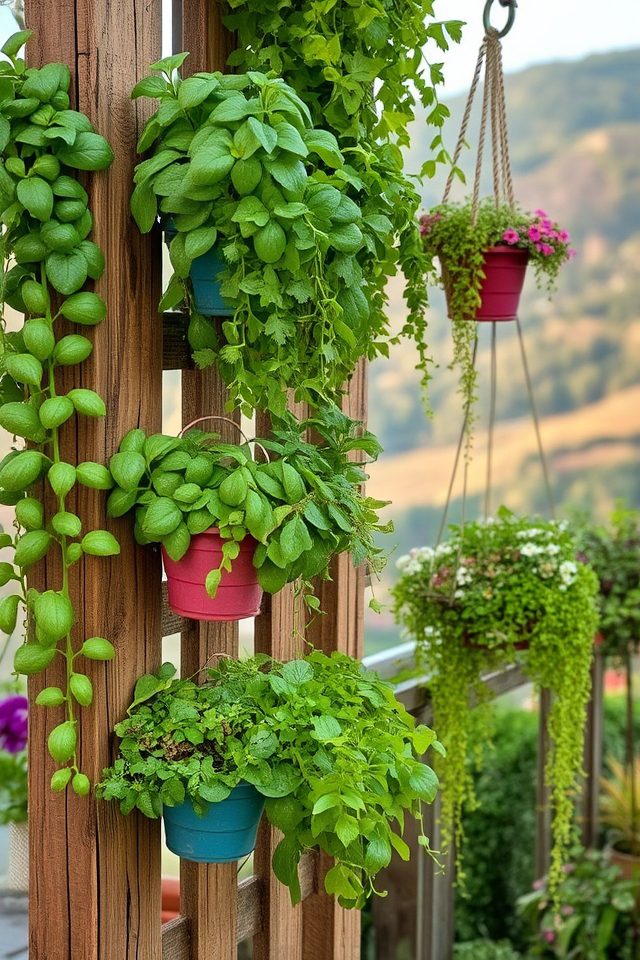
Vertical gardens are an innovative solution for maximizing space on sloped areas. By utilizing vertical structures such as trellises, wall planters, or living walls, you can beautifully display plants while saving valuable ground space. These gardens not only enhance the aesthetic appeal of sloped landscapes but also improve air quality and provide insulation. Additionally, they can minimize erosion, making them an eco-friendly option for cultivating a variety of plants in limited areas.
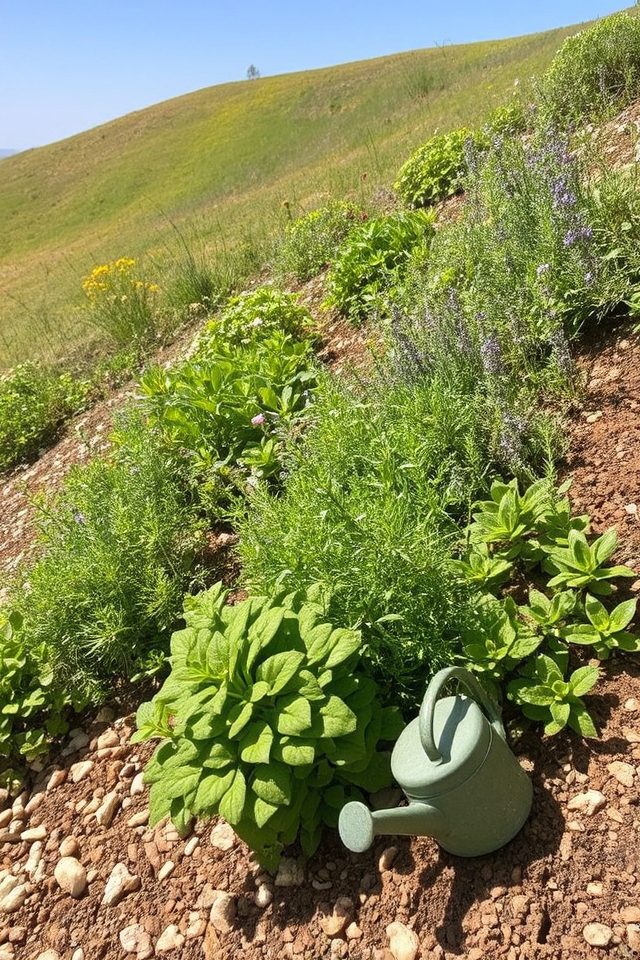
Edible herbs are a fantastic choice for planting on slopes, as their root systems help stabilize the soil while providing flavorful additions to your dishes. Varieties like thyme, rosemary, and oregano thrive in well-drained soil, making them perfect for sloped areas that may experience runoff. Additionally, these herbs are drought-resistant, requiring less maintenance, and their fragrant foliage can attract beneficial pollinators, enhancing the overall ecosystem of your garden.
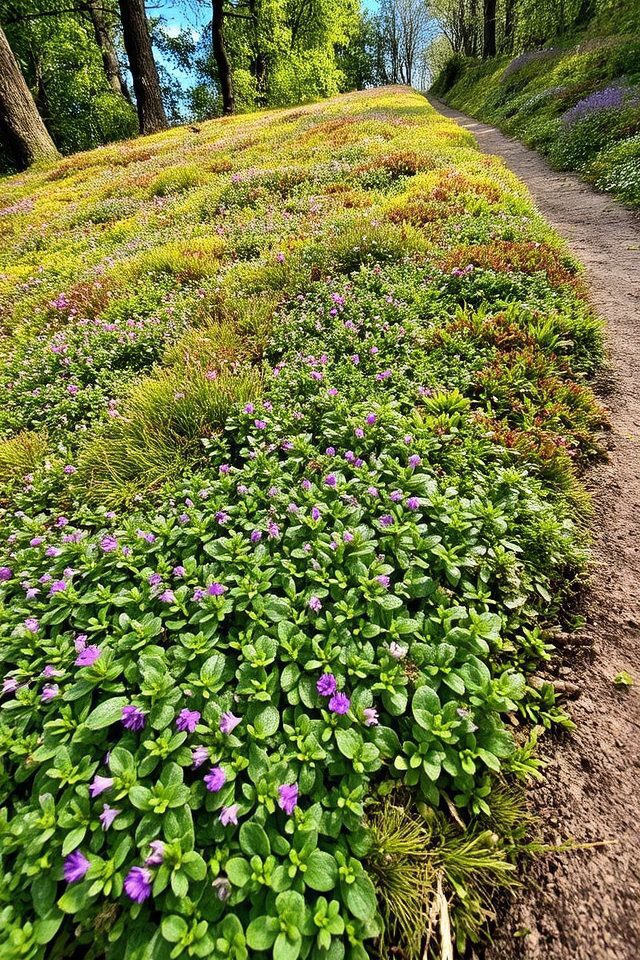
Ground cover plants are essential for preventing erosion on slopes due to their extensive root systems, which stabilize the soil and absorb excess water. Varieties such as creeping thyme, sedum, and vetch are not only effective in controlling soil movement but also add aesthetic value with their lush greenery and colorful blooms. By covering exposed soil, these plants reduce runoff, promote soil health, and create a sustainable landscape that thrives in challenging conditions.
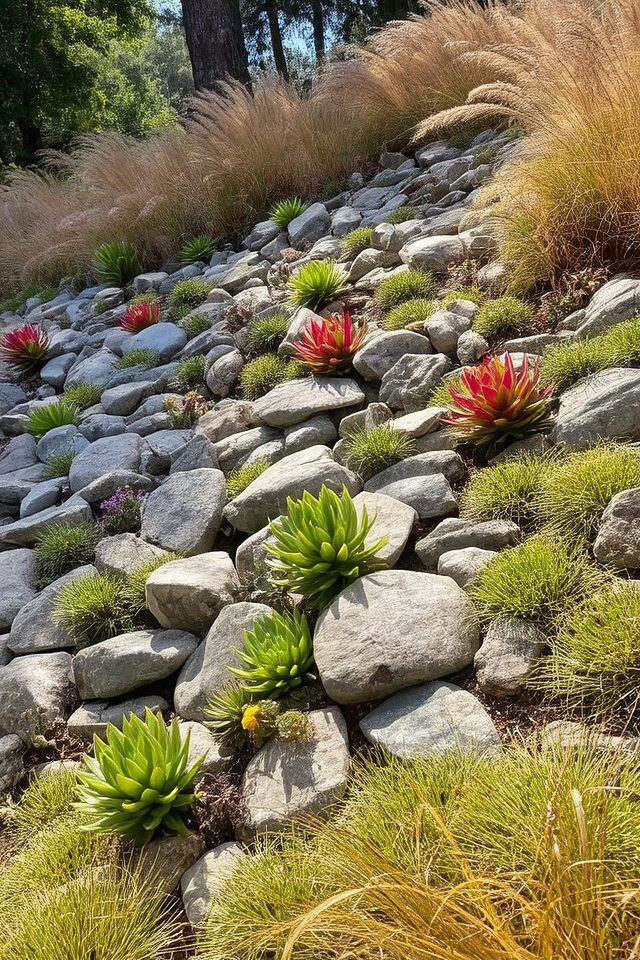
Rock gardens are an excellent choice for slopes, combining natural beauty with practicality. By incorporating various sizes and types of stones, you can create a rustic appeal that emphasizes the landscape’s contours. Drought-resistant plants such as succulents, alpine flowers, and ground covers can thrive in the rocky environment, requiring minimal maintenance. The hardscape elements not only add texture and interest but also help with erosion control, making rock gardens a sustainable option for sloped areas.
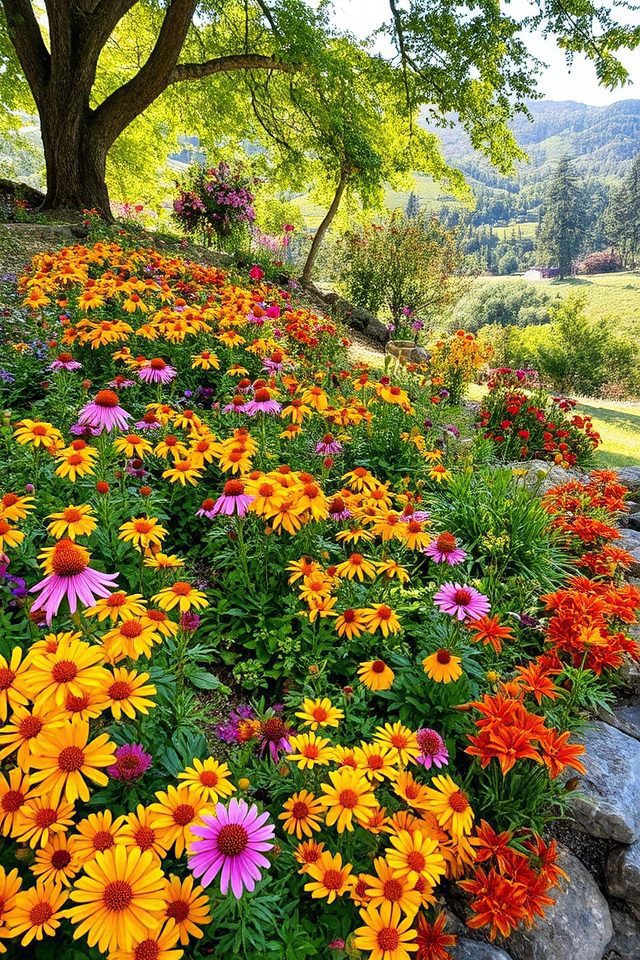
Colorful perennials are an excellent choice for sloped gardens, providing vibrant blooms throughout the year while enhancing soil stability. Varieties like coreopsis, coneflower, and daylily offer rich colors and attract pollinators, making your garden come alive. To achieve continuous blooms, pair early, mid, and late-season flowering plants. Additionally, their deep roots help prevent erosion, ensuring your sloped landscape remains beautiful and secure. With careful selection, you can create a stunning, low-maintenance floral display that thrives in diverse conditions.
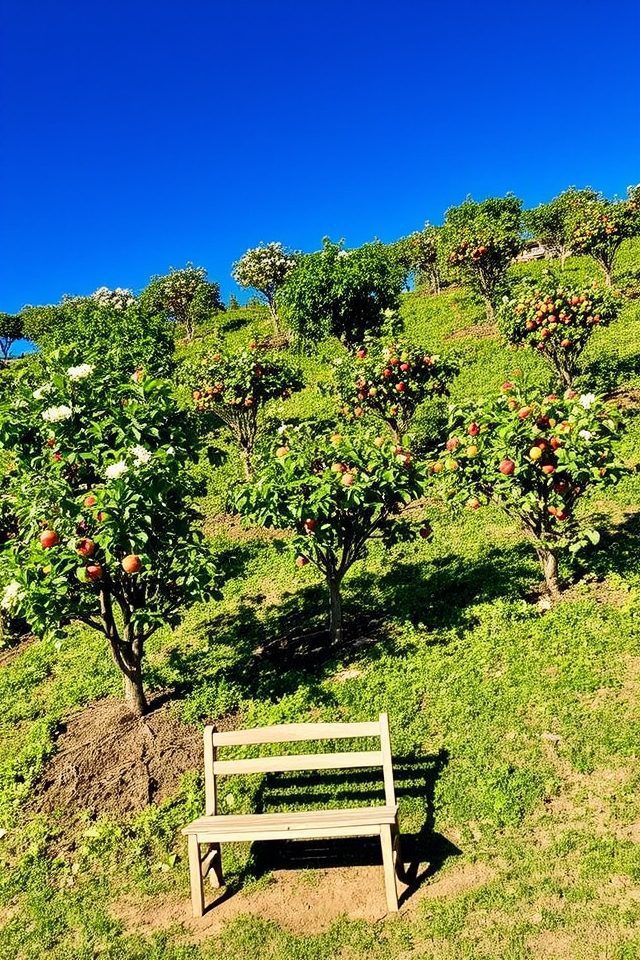
When selecting fruit trees for a slope, consider varieties that have a compact growth habit and strong root systems to stabilize the soil. Dwarf fruit trees, such as apple, peach, and cherry, are excellent choices as they are easier to manage and require less space. Additionally, trees like fig and plum are resilient and can thrive on slopes, enhancing both the visual appeal and the productivity of your landscape. Proper layering and spacing will guarantee healthy growth and reduce erosion.
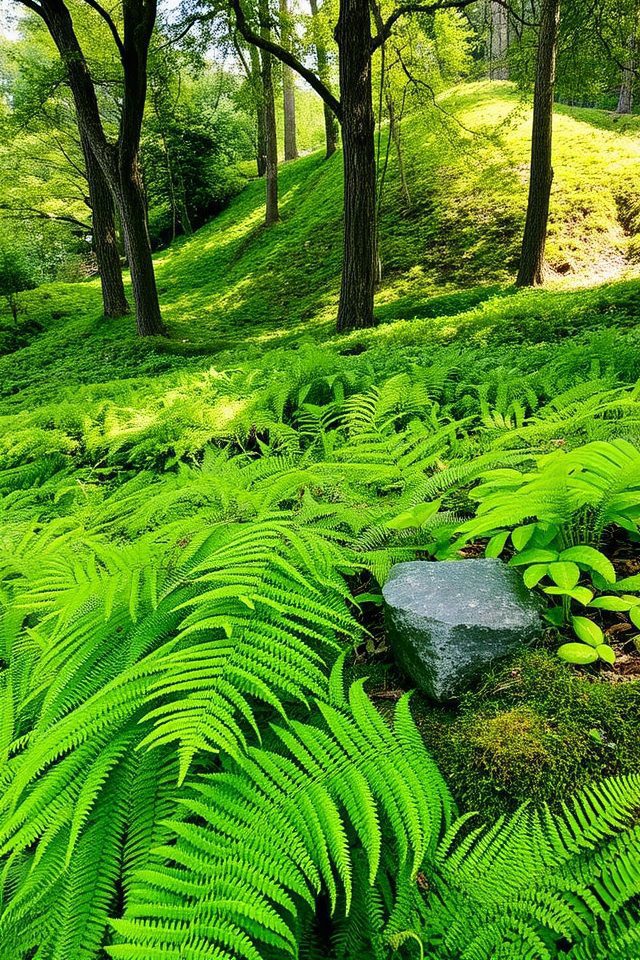
Ferns are an excellent choice for creating a lush, green layer on a slope, as they thrive in a variety of conditions, including shaded or partially shaded areas. Their delicate fronds add texture and movement to the landscape while helping to prevent soil erosion with their extensive root systems. From the bold Boston fern to the airy maidenhair fern, these plants not only enhance natural beauty but also provide habitat for wildlife, making them a valuable addition to any sloped garden.
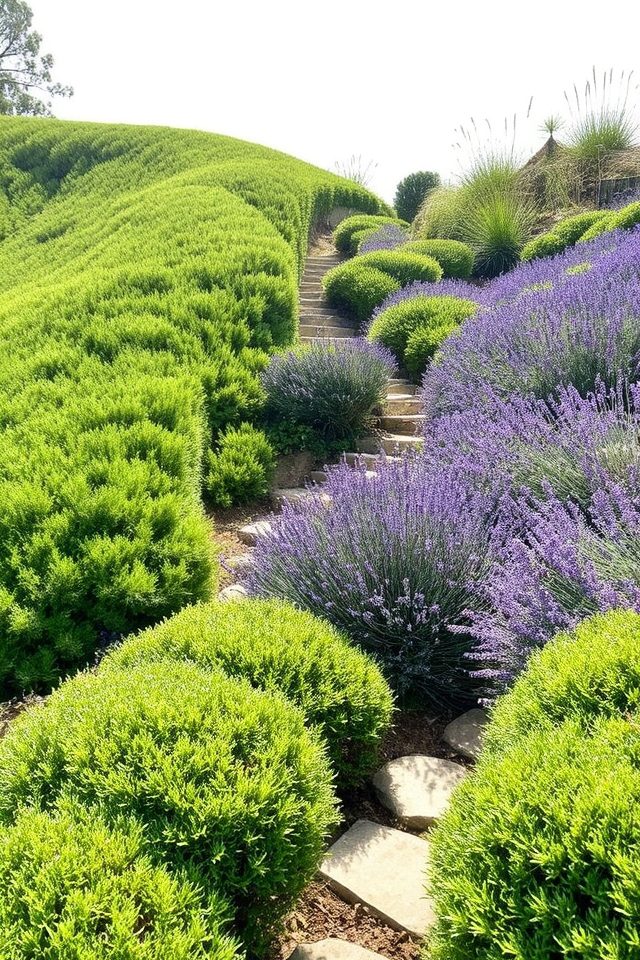
When selecting low-maintenance shrubs for a sloped area, consider varieties that thrive with minimal care while enhancing the landscape. Hardy options like junipers, boxwoods, and lavender are excellent choices for their drought resistance and adaptability. These shrubs require little pruning and provide year-round interest with their foliage and flowers. By incorporating low-maintenance shrubs, you can create a beautiful, sustainable slope that minimizes upkeep, allowing you to enjoy your outdoor space without the hassle.
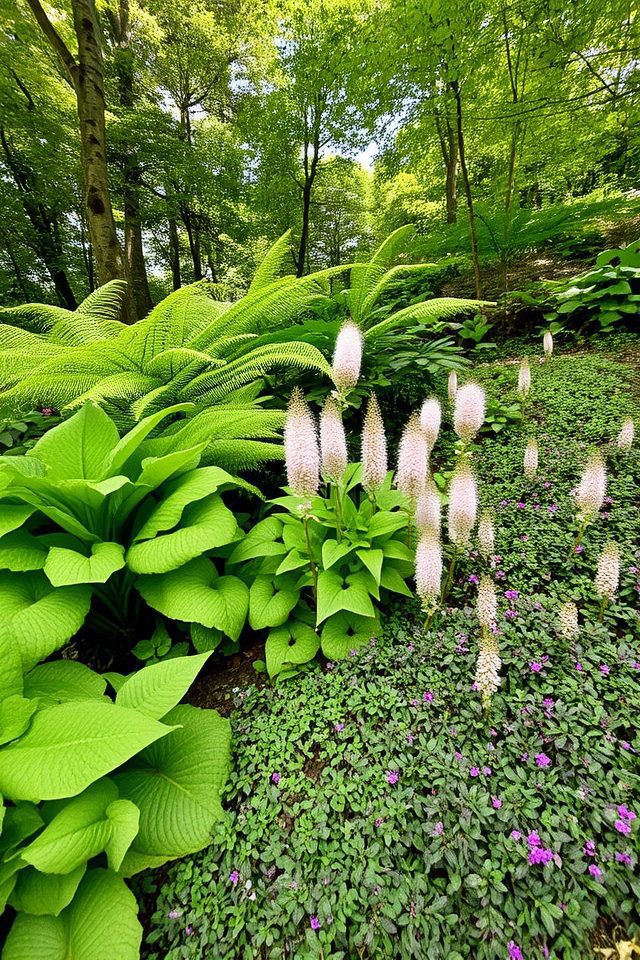
Shade-tolerant plants are ideal for enhancing the beauty of shaded slopes where sunlight is limited. Varieties such as ferns, hostas, and astilbes thrive in low-light conditions while providing lush foliage and colorful blooms. Groundcovers like creeping phlox and ajuga can help stabilize the soil and prevent erosion, making them practical choices. These plants not only soften the landscape but also create a serene, inviting atmosphere, transforming shaded slopes into cool, green retreats.
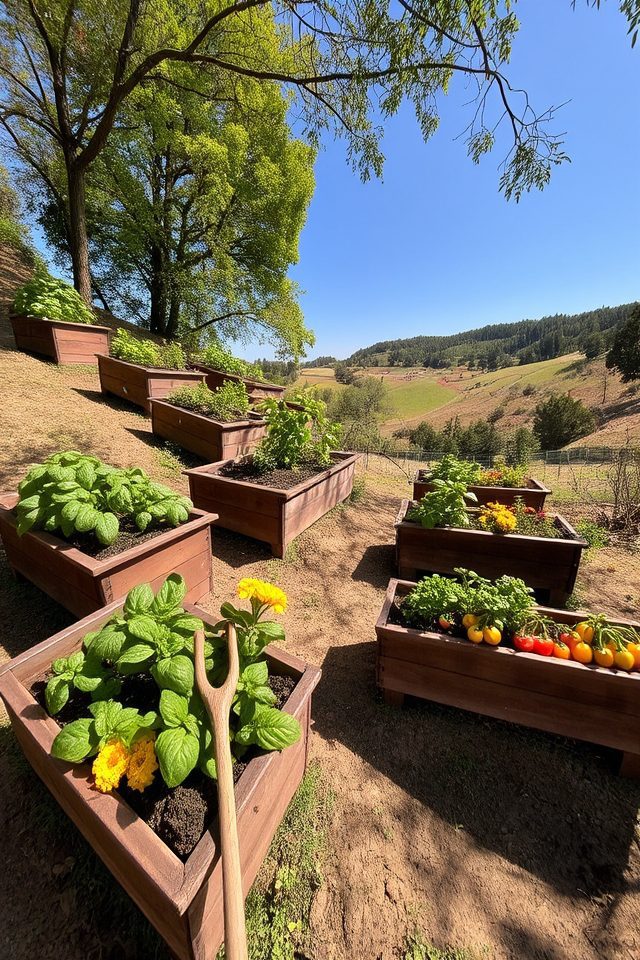
Raised beds are an excellent solution for gardening on slopes, offering enhanced drainage and accessibility. By constructing elevated beds, you can create level gardening spaces that minimize soil erosion and make it easier to manage plants. These beds can be filled with high-quality soil, allowing for improved plant growth. Additionally, using raised beds can help reduce weeds and pests, providing an efficient and aesthetically pleasing way to cultivate a diverse garden on uneven terrain.
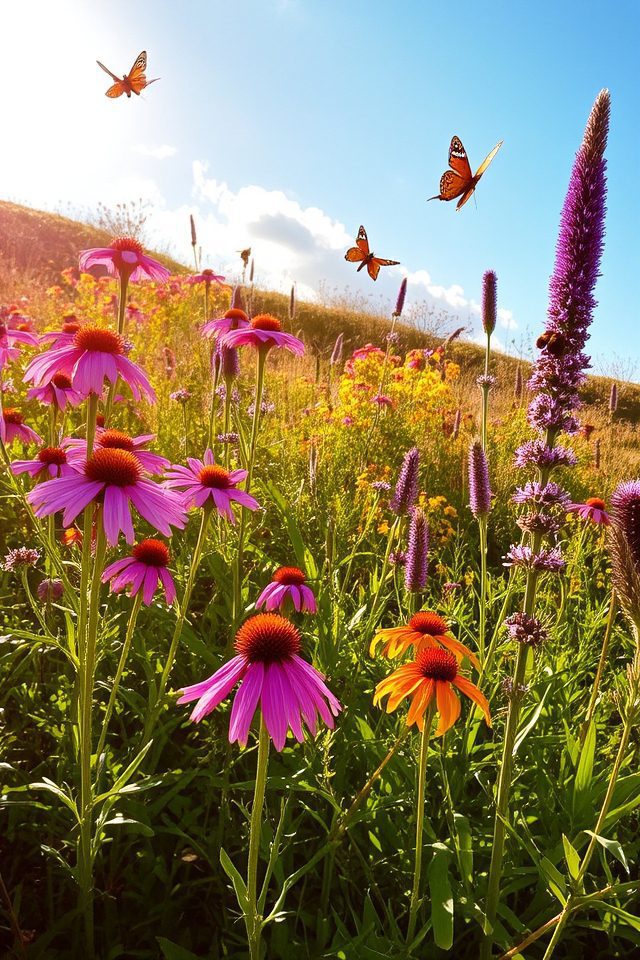
Pollinator plants are crucial for attracting bees and butterflies to your garden, especially on sloped landscapes where soil erosion can be a concern. Choosing vibrant flowers like coneflowers, liatris, and milkweed not only supports pollinator populations but also adds beauty and color to your space. These plants thrive in sunny conditions, providing nectar and pollen, helping to sustain these critical species while promoting biodiversity. A well-planted slope can become a sanctuary for these beneficial insects.
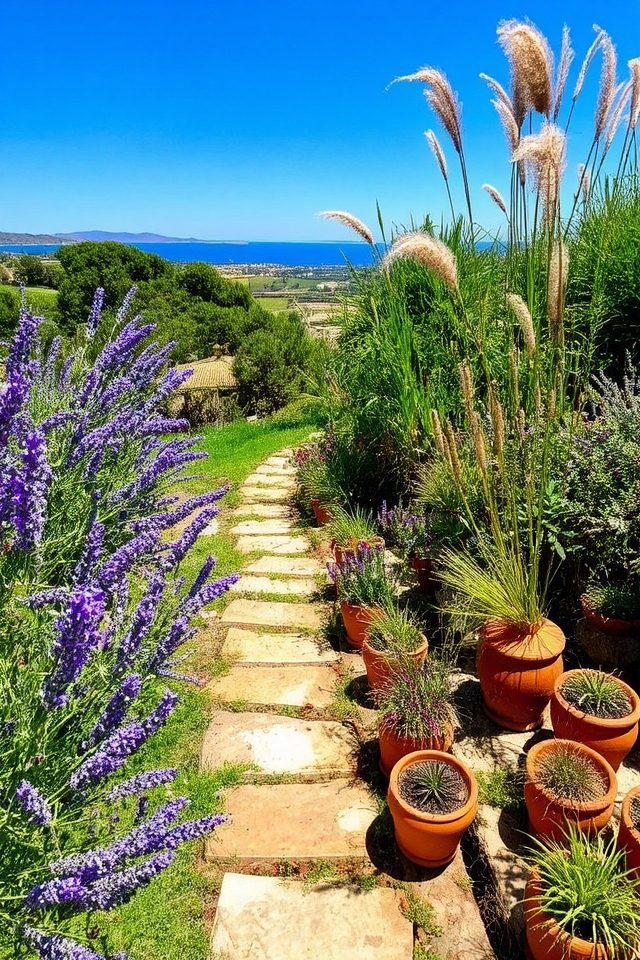
Creating a Mediterranean vibe on a slope can be achieved by selecting the right plants that thrive in warm, sunny environments. Consider incorporating drought-tolerant favorites such as lavender, rosemary, and sage, which not only provide delightful fragrances but also attract pollinators. Add ornamental grasses like ornamental oat or feather reed grass for texture. The warm hues of Mediterranean-style plants, combined with pathways made of natural stone, will transport you to sun-soaked landscapes, enhancing your garden’s charm.
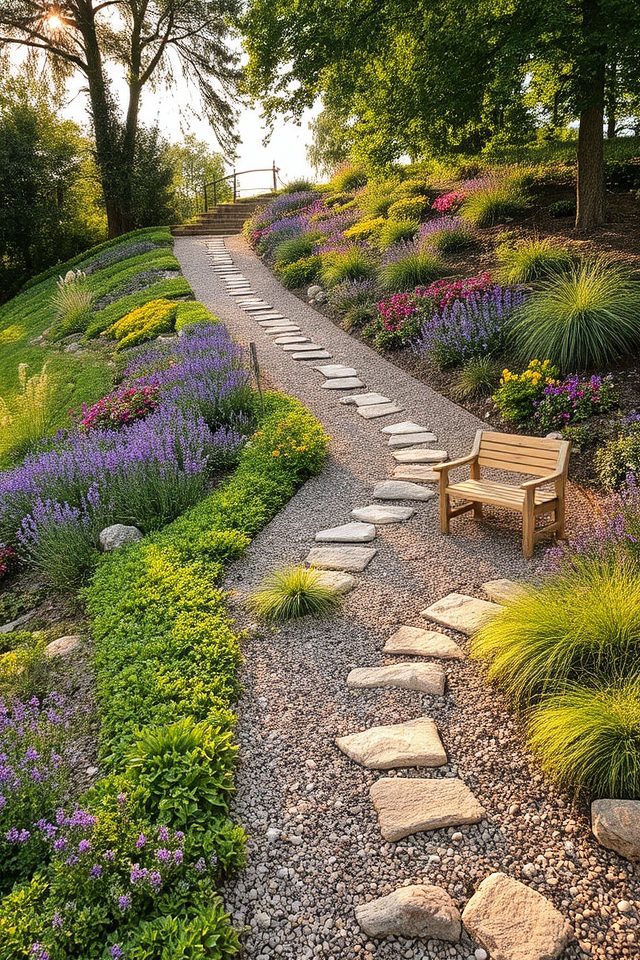
Creating pathways on a slope can enhance both functionality and visual appeal in your landscape design. Consider using materials like gravel, stone, or permeable pavers to form winding trails that guide the eye through your garden. Incorporating curves and varying widths will add dynamism, while strategically placed plantings along the edges can soften hardscapes. These pathways not only provide access to different areas but also create opportunities for seasonal color and texture, enhancing the overall aesthetic.
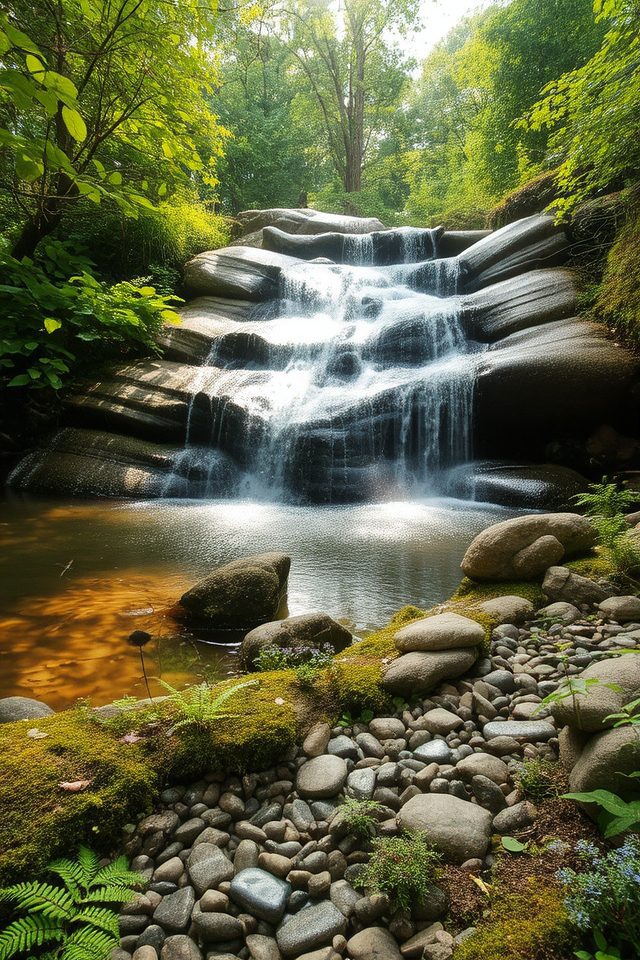
Water features can transform a sloped landscape into a serene retreat by introducing soothing sounds and visual tranquility. Options like cascading waterfalls, ponds, or gently flowing streams can be strategically placed to enhance the natural contours of the slope. Incorporating aquatic plants and smooth stones around these features can further integrate them into the surroundings, attracting wildlife and creating a peaceful atmosphere perfect for relaxation or meditation.
Transforming your slope into a stunning landscape isn’t just about beauty; it’s also about creating a thriving ecosystem. Did you know that native plants can support up to 10 times more pollinators than non-natives? By incorporating the planting ideas outlined, like vibrant wildflowers and practical pathways, you’ll not only enhance your outdoor space but also contribute to essential biodiversity. So get started today—your slope can be both beautiful and beneficial!

Don't let aphids, slugs, and caterpillars ruin another plant. Take back control with simple, natural methods that actually work.